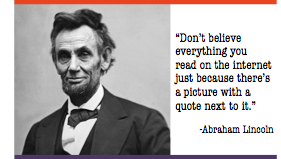Spot the Fake: Your Guide to Real News
Spot the Fake: Your Guide to Real News
“A
lie can travel halfway around the world while the truth is putting on its
shoes.” This quote by Mark Twain has proved to be truer than ever before.
In
today's digital world, false information spreads rapidly, causing real-world
harm. From misleading headlines to outright deception, fake news poses a
significant challenge. The consequences can be severe, including eroding trust
and dividing communities.
A
study at MIT reveals that fake news spreads more faster, deeper and broadly
than the truth. The truth rarely spreads beyond a 1000 people whereas the most
contentious fake news in their sample regularly spread between 1000 and a 100
thousand people. Another revelation was that humans were more likely to spread
fake news than the truth compared to bots.
For
instance, misinformation about COVID-19 caused serious harm. Over 6,000 people
were hospitalized and at least 800 died in the first three months of 2020 alone
due to false information about the virus. Certain governments denied the
severity of the second wave, despite many deaths. Some public agencies in India
promoted Ayurvedic products like Ayush64 as a cure with no proof complemented
by the health minister falsely claiming World Health Organization approval.
v ‘If everybody is a
reporter then nobody is.’ So how do you get the truth or something close to it?
- Get original news unfiltered by middle men
- Follow reporters on social media: Newscasters and bloggers post
updates and recordings from the midst of the chaos during major events.
- More chaotic the story, the less you should follow in
real-time: for example, during events like terrorist attacks or natural
disasters, check for latest information at several points of the day rather
than every few minutes
- Read coverage from multiple outlets and follow a diverse
range of perspectives: do not remain in echo chambers
- Separate fact from opinion: check for words that indicate guesses by
outlets or a safe play such as ‘think’ or ‘likely’.
- Check the reputation and validity of the source: some reports
rely on anonymous sources who could have an interest in influencing coverage
- Use fact-checking websites such as:
- Learn how to judge news sites through their
attention-grabbing and sensationalized headlines which give rise to clickbait.
- Verify news before spreading it
Remember - with freedom comes
responsibility. It is crucial to ensure that this flow of information does not
become a flood leaving us less informed than before we took the plunge. Being a
discerning consumer of media is not just about protecting yourself; it's about
empowering yourself to make informed decisions and shape the world around you.
So, the next time you are exposed to news,
ask yourself – ‘Is this information trying to inform me, persuade me, or
manipulate me?’
-BY KAVYA MEHTA



Knowledgeable information regarding awareness of true and fake news...👌👍👏
ReplyDeleteUseful information about true and fake news. Good write up to spread awareness 👍 👏
ReplyDeleteThanks for the practical tips on how to identify and debunk misinformation. Must read for anyone concerned about the spread of fake news
ReplyDeleteDefinitely going to start using the fact-checking websites recommended in the article.
ReplyDeleteThis article is incredibly well-written and informative. It has opened my eyes to the extent of the misinformation problem.
ReplyDelete